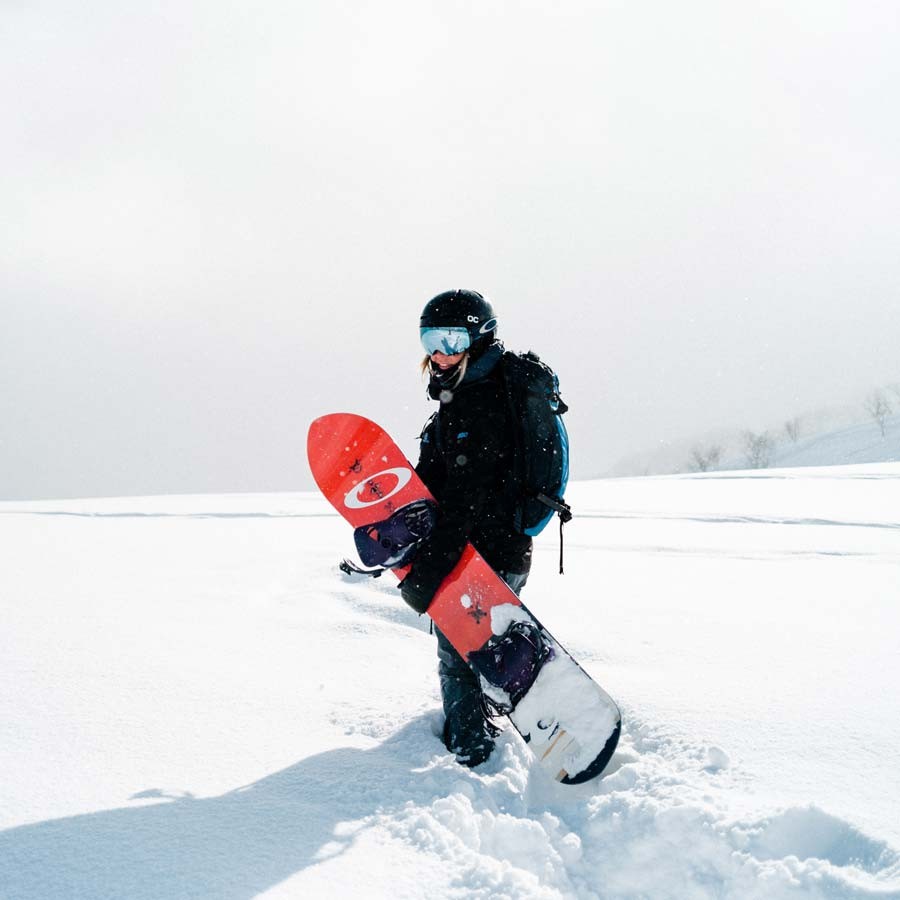Ski & Snowboard Gear Guide
Choosing the right gear is not just about deciding whether you’re a skier or snowboarder! Picking the right equipment starts with basic clothing and goes all the way to choosing between various board and ski styles.
Ski Gear Basics
When you’re heading up to New Zealand’s ski areas there’s one basic rule: you should dress like an onion – lots of layers! You want to be able to adapt to temperature and weather changes on the slopes without getting too cold or too hot, and so your snow clothing should consist of three layers. If you don't have room for bulky ski clothing on your trip, there’s a slew of rental shops on and off the mountains.
For your base layer, thermal underwear is the best choice as it’s worn next to the skin. Long johns might not make a fashion statement but they definitely keep you warm and dry. It’s best to choose materials that draw moisture away from your skin, such as merino or polypropylene. Your middle layer should be fleece or wool, trapping warm air next to your body. Layer three should be a windproof, water-repellent ski jacket. And don’t forget those thermal socks to keep your feet warm – if your feet get wet and cold you’ll struggle to get warm no matter how many layers you’re wearing! Finally, pull on accessories to protect your hands, head and eyes.
Head Wrap up warm with a hat (with earflaps), beanie or at least a headband. Helmets are advisable for everyone and are particularly important for ski newbies and freestylers.
Hands Choose waterproof, durable, padded gloves to keep you warm. Fleece dries faster than wool and mittens are warmer than gloves. If you feel that mittens can be awkward, why not try a three-finger mitt?
Eyes To avoid snow blindness, always wear sunglasses that filter 100 percent of UV rays, or a ski mask. To block light at the sides, glasses should wrap around the face and you should always carry a spare pair in case you lose your good ones! Be careful: while it might seem that darker glasses offer more protection, that’s not necessarily the case.
Skis and snowboards New skis and snowboards are developed every ski season, so you’re spoilt for choice. The massive range of ski and snowboard designs can also be a bit daunting, so here are a few pointers to make your choice easier.
Firstly, think about your preferred style. Usually professionals recommend shorter skis and snowboards for beginners, because they don’t go too fast and are easier to handle. Shorter snowboards are also the plank of choice for freestyle riders doing a lot of tricks. Longer snowboards and skis are slightly more difficult to manoeuvre and are best for more aggressive riders and skiers. They are good for high-speed carving and suitable for a variety of conditions.
Ski Styles
Alpine skis These are good for hard-groomed pistes. Precise and fast, their bindings securely fasten the feet at heels and toes.
Freeride skis These planks are brilliant in tough conditions. Freeride skis slice through slush and float through powder.
Powder hound planks Fat powder hound skis are designed for deep powder and cut-up, soft snow. Perfect for heli skiing!
Telemark skis The binding on Telemark skis, an increasingly popular style, fastens only at the toe.
Snowboard Styles
Alpine or race boards Thin and stable with a tail almost flat, alpine or race boards enable fast turns and high velocity.
Freeride boards These are versatile semi-rigid boards, longer and taller than freestylers. Great on all types of terrain.
Freestyle boards Popular with beginners, freestyle boards are short, wide and flexible, with identical tail and nose. They’re a good choice for heli snowboarding and also essential for getting air in the terrain park and half-pipe.
Ski Gear – Rent or Buy?
To see whether it’s cheaper to rent or buy your ski gear, you have to figure out the cost-per-use ratio. Divide the cost of the equipment by your number of snow days per year – you’ll see how long you’ll need to keep your ski gear before it’s more cost-effective than renting. When flying into New Zealand from overseas you’ll have to take into consideration extra costs for getting your ski gear on the plane as well.
Read more for the latest season info on skiing and snowboarding in New Zealand

Photo: Hamish Duncan